【Lithium Battery】Carbon-Based Anode Materials: Structural Characteristics, Technological ...

The rapid growth of the EV and energy storage industries is boosting demand for high-performance lithium batteries, driving the market for quality petroleum coke and synthetic graphite. The quality and particle size of calcined petroleum coke directly affect synthetic graphite performance, especially in anode production.
【Lithium Battery】Carbon-Based Anode Materials: Structural Characteristics, Technological Breakthroughs, and Industrial Ecosystem
As the core choice for lithium battery anodes, carbon-based materials occupy more than 95% of the global anode materials market thanks to their unique layered crystal structure, excellent conductivity, and chemical stability. From the flake structure of natural graphite to the precisely engineered artificial graphite, and further to the innovative applications of new types of carbon materials such as hard carbon and soft carbon, carbon-based anode materials have always been the key carriers for enhancing lithium battery energy density, cycle life, and fast-charging performance. This article will systematically analyze the classification system, preparation processes, performance optimization, and industrial dynamics of carbon-based anode materials, revealing their core value in the new energy revolution.
Classification and Structural Characteristics of Carbon-Based Anode Materials
The performance differences of carbon-based anode materials stem from their microstructures and the arrangements of carbon atoms, forming three main systems: natural graphite, artificial graphite, and new carbon materials. Each presents significant characteristics in crystal structure, lithium storage mechanisms, and application scenarios.
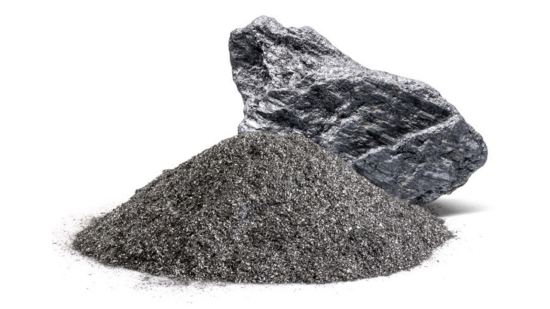
Natural Graphite: Resource Advantages and Process Innovation
Natural graphite, the oldest carbon-based anode material, uses flake graphite as its core raw material. Its naturally formed hexagonal layered structure (interlayer spacing ~0.335 nm) provides an ideal channel for lithium-ion intercalation. High-quality flake graphite has a carbon content of 94–98%, but must undergo purification to meet battery-grade requirements (≥99.95% carbon content). Traditional purification processes rely on hydrofluoric acid (HF) etching, which effectively removes silicon and aluminum impurities but generates 20–30 tons of fluoride-containing wastewater per ton of product, posing severe environmental pressure. In 2025, Suzhou Institute of Non-metallic Minerals achieved a major breakthrough with fluoride-free nitrate-controlled green purification technology. Through large-scale alkali fusion combined with ultrasonic hydrothermal washing, the removal efficiency of silicon and aluminum impurities improved by more than 30%, while achieving 90% wastewater recycling and reducing production costs by 35%, offering a new pathway for sustainable natural graphite production.
After spheroidization, natural graphite particles achieve a roundness above 0.85, significantly improving fluidity and making them more suitable for automated coating processes. Surface coating is a key modification step: pitch or resin carbonization forms a 5–10 nm amorphous carbon layer, effectively suppressing co-intercalation of electrolytes into graphite layers and increasing the initial charge-discharge efficiency from 85% to around 90%. Its practical specific capacity reaches 340–360 mAh/g, with a volume expansion rate of ~10%. Natural graphite maintains a stable market share in consumer electronics, but its lithium plating risk under high-rate charging limits its application in high-end power batteries.
Artificial Graphite: Performance Benchmark through Engineering Design
Artificial graphite, through precise control of raw materials and processes, achieves superior overall performance compared with natural graphite and has become the preferred anode material for power batteries. Its preparation is a typical case of material engineering: using needle coke as the core raw material (accounting for 40–50% of cost), crushed and classified to particle sizes of 5–20 μm, followed by high-temperature graphitization at 2800–3200°C, achieving graphitization degrees above 90%. Baowu Carbon, relying on its full industry chain layout ("tar deep processing – pitch-based materials – lithium anodes"), realizes full-process quality control. Its artificial graphite products for power batteries retain over 85% capacity after 1000 cycles at 1C.
The microstructure of artificial graphite can be finely tuned by process parameters: reducing carbonization heating rates (5°C/min) decreases internal porosity and increases density; extending graphitization holding times (15 hours) improves crystal order and lowers interlayer resistance. Surface coating technologies are more advanced: gradient coating (inner hard carbon + outer soft carbon) enhances both cycle stability and rate performance. These optimizations give artificial graphite 1–2C fast-charging capability, with initial charge-discharge efficiencies of 90–95%. Though more expensive than natural graphite (25,000–35,000 RMB/ton), artificial graphite accounts for over 80% of power battery anodes. Tesla's 4680 cells and CATL's Kirin batteries both employ high-crystallinity artificial graphite.
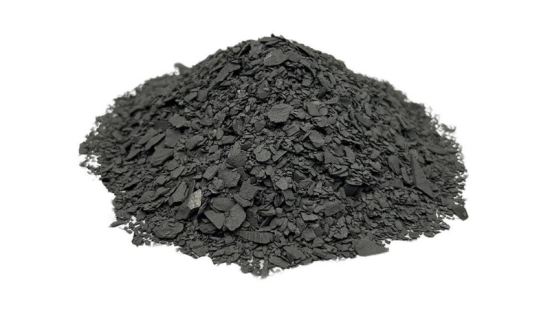
New Carbon Materials: Innovative Applications of Hard Carbon and Soft Carbon
Hard carbon and soft carbon, as non-graphitizable carbons, show great potential in specific scenarios thanks to their unique structures. Hard carbon, derived from biomass such as coconut shells or lignin, undergoes carbonization at 1000–1500°C to form amorphous structures. Its disordered carbon atom arrangement provides abundant lithium storage sites, with a theoretical specific capacity of 300–400 mAh/g. While not yet widely used in lithium batteries, its strong sodium ion adsorption makes it the core anode material for sodium-ion batteries. Panasonic in Japan has already developed sodium-ion battery prototypes with hard carbon anodes, achieving an energy density of 160 Wh/kg.
Soft carbon has seen breakthrough progress thanks to Northwestern Polytechnical University's 2025 research. Academician Huang Wei's team synthesized nitrogen-phosphorus co-doped mesoporous soft carbon (NPSC), which maintained a reversible capacity of 215 mAh/g even at an ultra-high current density of 10 A/g. This material, prepared through in-situ self-activation of polyphosphoric acid and p-phenylenediamine, featured expanded interlayer spacing (0.38 nm) and uniformly distributed mesopores, creating efficient ion diffusion channels. Applied to sodium-ion batteries, it achieved a power density of 9.2 kW/kg, offering new ideas for fast-charging anode design in lithium batteries. In lithium batteries, soft carbon primarily exists as mesocarbon microbeads (MCMB), with excellent rate performance suitable for special-purpose fast-charging power cells. However, its high cost (40,000–50,000 RMB/ton) keeps its market share below 5%.
Performance Optimization Technologies and Mechanisms of Carbon-Based Materials
Doping Modification: Atomic-Level Control for Performance Leaps
Heteroatom doping is an effective method to enhance the electrochemical performance of carbon-based materials. By introducing elements such as nitrogen, phosphorus, or oxygen into the carbon framework, conductivity, wettability, and lithium storage sites are simultaneously optimized. Northwestern Polytechnical University's nitrogen-phosphorus co-doping technology demonstrated precise molecular design: through chemical crosslinking of polyphosphoric acid and p-phenylenediamine, uniform heteroatom distribution was achieved, with nitrogen content of 3.2 at% and phosphorus content of 1.8 at%. This co-doping not only increased defect sites but also expanded interlayer spacing from 0.34 nm to 0.38 nm, raising sodium ion diffusion coefficients by two orders of magnitude, providing insights for high-rate soft carbon anode design.
For graphite materials, boron doping significantly enhances conductivity, reducing resistivity from 10⁻⁴ Ω·cm to 10⁻⁵ Ω·cm; nitrogen doping increases surface polarity and improves electrolyte wettability, lowering electrode interfacial impedance by over 30%. Industrial doping mainly introduces heteroatom precursors (such as urea, melamine) during carbonization. Baowu Carbon applied nitrogen doping in its next-generation fast-charging anodes, improving 4C capacity retention from 75% to 82%.
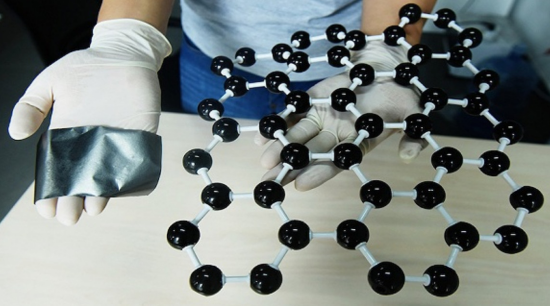
Structural Design: Multi-Scale Collaborative Optimization
Structural design of carbon-based materials spans from the nanoscale to the macroscale. At the nanoscale, mesoporous structures (2–50 nm) provide rapid diffusion channels for lithium ions. Nitrogen-phosphorus co-doped soft carbon achieved mesopore volumes of 0.8 cm³/g, reducing ion migration barriers. At the microscale, multi-scale particle size distribution (5 μm + 15 μm mix) improved electrode compaction density; artificial graphite using this design raised compaction density from 1.6 g/cm³ to 1.8 g/cm³, enhancing volumetric energy density. At the macroscale, integrated electrode design bonded carbon materials with copper foil current collectors via carbon coatings, reducing interfacial impedance by 15–20%.
Surface coating is a key optimization step. Different coatings yield differentiated effects: pitch-based carbon coatings improve cycle stability, raising 1000-cycle capacity retention by 5–8%; resin-based coatings enhance rate performance, supporting higher current density charging; SiOₓ composite coatings suppress electrolyte decomposition and volume expansion. Putailai's gradient coating process, applying 3–5% coating, improved both cycling and rate performance, and has already been adopted in CATL's high-end power batteries.
Green Manufacturing Processes: A Necessity for Sustainable Development
The "green" transformation of carbon-based material production has become an industry consensus, focusing on overcoming the two bottlenecks of high-pollution purification and high-energy-consumption graphitization. In purification, Suzhou Institute of Non-metallic Minerals' fluoride-free nitrate-controlled technology replaced HF entirely. Through alkali fusion–ultrasonic washing, it achieved ≥99.95% carbon purity while cutting acid consumption from 500 kg/ton to 150 kg/ton and reducing wastewater discharge by 70%. The technology has reached 10,000-ton production line design, offering a full set of solutions for eco-friendly natural graphite production.
In graphitization, energy-saving innovations are equally significant. Continuous graphitization furnaces replaced traditional Acheson furnaces, reducing energy consumption from 12,000 kWh/ton to below 8,000 kWh/ton. Putailai built the world's first solar-powered graphitization production line, further reducing carbon emissions. Its artificial graphite had 40% lower carbon footprint compared with traditional processes. Baowu Carbon integrated its entire value chain by converting coke by-products (tar) directly into anode raw materials, realizing resource recycling and further lowering per-unit energy consumption and costs.
Industrial Ecosystem and Development Trends of Carbon-Based Anode Materials
Market Landscape and Competition Dynamics
The 2025 global carbon-based anode material market shows a clear gradient distribution: artificial graphite holds 65–70% share, natural graphite 30–35%, and new materials such as hard/soft carbon less than 5%. Chinese companies dominate the global supply chain, accounting for over 85% of production, with leading enterprises such as Putailai, Shanshan, Xiangfenghua, and new entrants like Baowu Carbon forming a competitive landscape. Leveraging coke-tar resource advantages and full industry chain integration, Baowu Carbon rapidly emerged as a major player, covering power batteries, energy storage systems, and digital terminals with strong growth potential.
The core of market competition focuses on balancing performance and cost: power battery manufacturers prefer highly stable artificial graphite to lower lifecycle costs; consumer electronics favor more cost-effective natural graphite; while energy storage batteries' extreme cycling demands (over 10,000 cycles) create a niche for hard carbon. As demand for higher energy density and fast-charging grows in EVs, the market for high-crystallinity, high-rate artificial graphite continues to expand, with expected CAGR of 15% from 2025 to 2030.
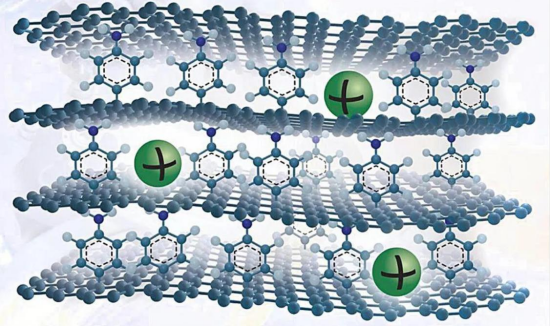
Cost Structure and Optimization Pathways
Cost control of carbon-based anode materials directly affects lithium battery economics. For artificial graphite, raw materials such as needle coke account for 40–50%, and graphitization accounts for 30–35%, making them the key areas for cost optimization. Coal-based needle coke successfully reduced raw material costs by 20%, while continuous graphitization cut processing costs from 8,000 RMB/ton to below 5,000 RMB/ton. Baowu Carbon's vertical integration ("tar – pitch – anode") further compressed intermediate costs, giving it a 10–15% cost advantage over companies relying on external raw materials.
For natural graphite, cost optimization focuses on purification. Suzhou Institute's fluoride-free nitrate technology reduced high-purity graphite production costs by 35%, significantly enhancing its competitiveness in mid- and low-end power batteries. Scale effects also play a critical role: 10,000-ton production lines lower unit fixed costs by 15–20%, pushing leading companies to keep expanding capacity and forming a "scale–cost–market" virtuous cycle. As green processes proliferate, environmental costs of carbon-based materials will become more explicit, and companies with eco-friendly advantages will enjoy greater market premiums.
Technological Integration and Future Directions
The future of carbon-based materials shows two parallel trends: "optimization and upgrading" and "composite innovation." Within pure carbon systems, high-capacity targets are pursued via defect regulation and structure optimization, aiming to raise artificial graphite's practical specific capacity from 360 mAh/g to over 380 mAh/g. Fast-charging is driven by mesoporous structures and conductive networks, targeting products that support over 4C fast charging, enabling EVs to recharge in 10 minutes.
Composite development with silicon-based materials is inevitable. The "graphite + silicon + carbon nanotube" ternary structure has been experimentally validated: graphite provides structural stability, silicon raises specific capacity (10% silicon doping achieves ~450 mAh/g), and carbon nanotubes enhance conductivity. This approach balances energy density with cycle life. From 2025 to 2027, silicon-carbon composite anodes with 15–20% silicon content are expected to achieve mass production.
Hard carbon and soft carbon applications are also expanding: hard carbon's maturity in sodium-ion batteries positions it for breakthroughs in long-cycle lithium battery scenarios; soft carbon's high-rate performance gives it unique advantages in fast-charging, and breakthroughs like nitrogen-phosphorus co-doping may raise its market share from 5% to over 15%. As the foundation of lithium battery anodes, carbon-based materials will continue to play a central role in coordination with new materials, providing stable support for the sustainable development of the new energy industry.
Feel free to contact us anytime for more information about the Anode Material market. Our team is dedicated to providing you with in-depth insights and customized assistance based on your needs. Whether you have questions about product specifications, market trends, or pricing, we are here to help.
No related results found
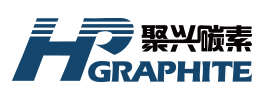







0 Replies